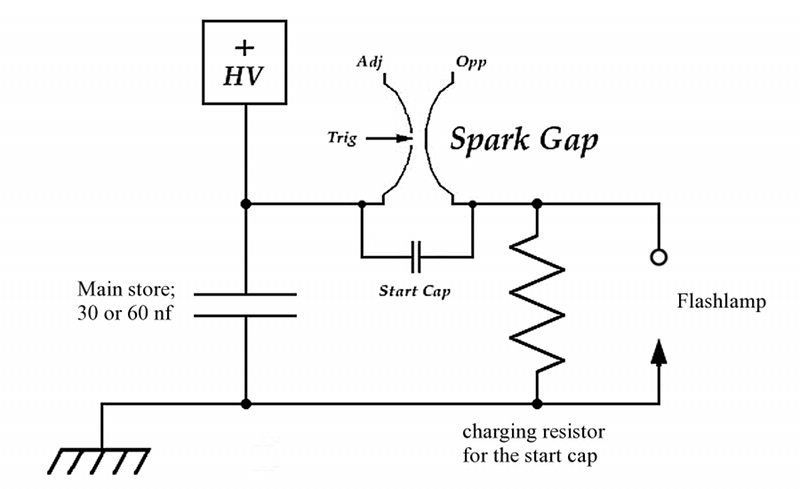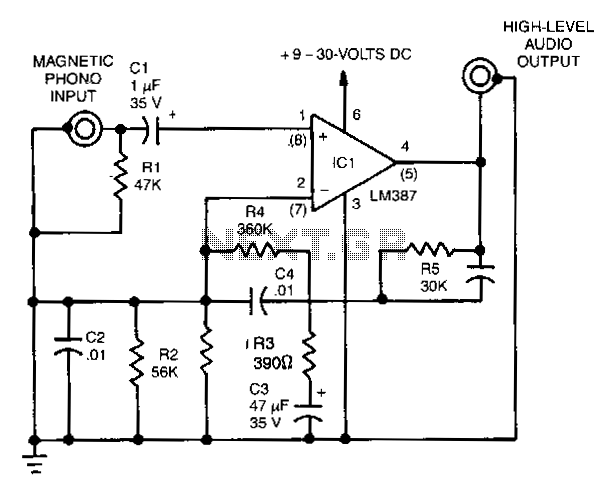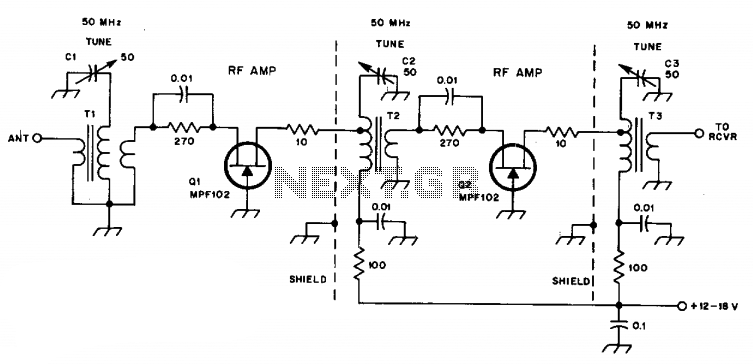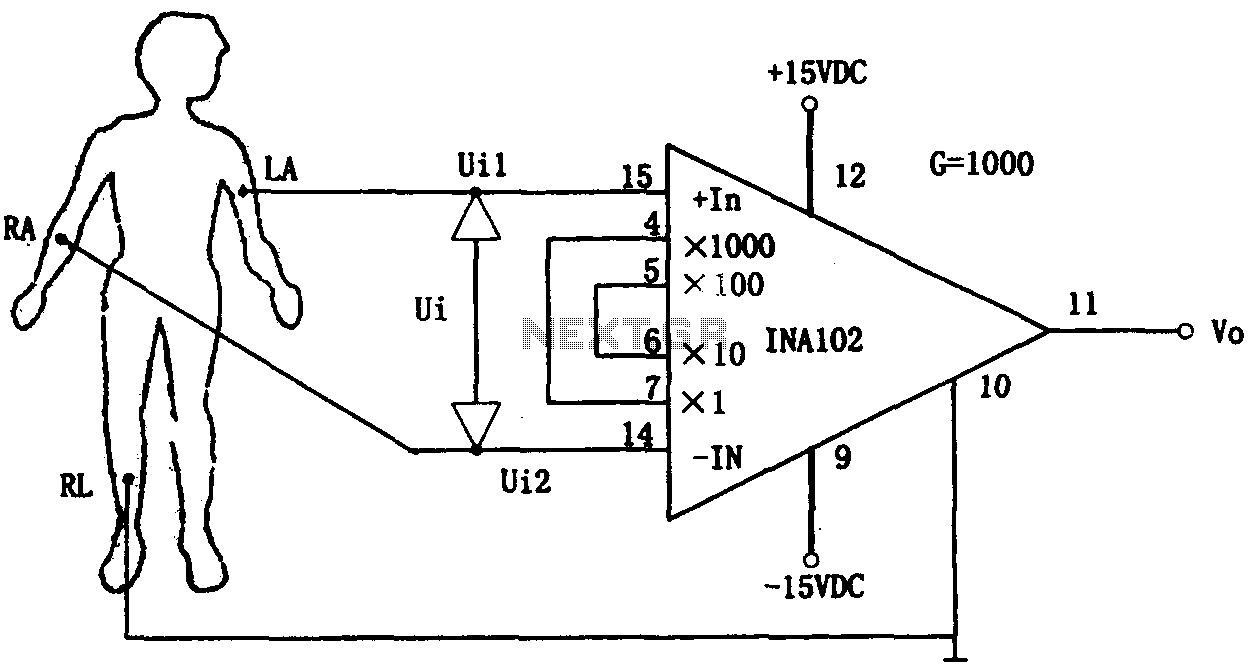
pt05 diy preamplifier

The next stage operates in conjunction with the first stage and is fully complementary. A cascode circuit is included to enhance the linearity of the amplifiers. This cascode circuit requires a constant reference voltage for biasing to activate the cascode transistor. A transistor array has been selected as the voltage reference due to its lower current requirements compared to a zener diode, standard diode, or LED, and it also produces less noise. The overall voltage gain is set to 12 times. The power supply for the PT05 DIY preamplifier consists of a linear power supply with a voltage regulation circuit that includes a rectifier and two regulator ICs per side. This configuration is referred to as a 2.1 voltage regulation system, where "2" indicates two stages of voltage regulation using two regulator ICs, and "0.1" represents a shunt voltage regulator. The resulting sound profile is polite, with slightly less deep bass than the PT03, but offering better musicality. The midrange and treble details are well-executed.
The circuit design incorporates a fully complementary amplifier configuration, which enhances the performance by balancing the positive and negative signal paths. The cascode circuit is strategically positioned to improve the linearity of the amplifiers, which is crucial for high-fidelity audio applications. By utilizing a transistor array as a voltage reference, the design minimizes current consumption while maintaining stability and low noise levels, which is essential for achieving high-quality audio output.
The voltage gain of 12 is achieved through careful selection of component values and feedback mechanisms within the amplifier stages. This gain is critical for ensuring that the output signal is sufficiently amplified for downstream audio processing or amplification stages.
The linear power supply design is notable for its two-stage voltage regulation approach. The first stage employs a rectifier to convert the AC input to DC, which is then smoothed by filtering capacitors. The two regulator ICs provide a stable output voltage by reducing ripple and noise, ensuring that the amplifiers receive clean power. The shunt voltage regulator in the second stage further refines the output, providing precise voltage regulation and enhancing the overall performance of the preamplifier.
The audio characteristics of the PT05 preamplifier have been carefully tuned to provide a polite sound signature, making it suitable for various audio applications. While the deep bass response may be slightly less pronounced compared to the PT03 model, the overall musicality is improved, with a focus on clarity and detail in the midrange and treble frequencies. This attention to detail in the circuit design and component selection contributes to a well-rounded listening experience, making the PT05 a valuable addition to any audio setup.The next stage is working with the first stage as well it is a fully-complementary. The cascode circuit is also in this place to improve linearity of the amplifiers. Cascode circuit requires a constant reference voltage biasing to make a cascode transistor on. We chose to use a transistor array as a voltage reference. Because it requires less curr ent compared to the use of zener diode, diode and LED, and of course, it has lower noise. The overall voltage gain is set to 12 times. What are the power supply of my PT05 DIY preamplifier. It is a linear power supply with a voltage regulation circuit includes a rectifier and regulator IC amounting 2 pieces per side. It was called a 2. 1 voltage regulation. 2 is 2 stages voltage regulation by 2 regulator ICs. 0. 1 is a shunt voltage regulator. So I called it a 2. 1 voltage regulation. Overall, It would polite sound. The deep bass is slightly less than the PT03. But it gives the better musical. Midrange and treble detailed are done very well. 🔗 External reference
The circuit design incorporates a fully complementary amplifier configuration, which enhances the performance by balancing the positive and negative signal paths. The cascode circuit is strategically positioned to improve the linearity of the amplifiers, which is crucial for high-fidelity audio applications. By utilizing a transistor array as a voltage reference, the design minimizes current consumption while maintaining stability and low noise levels, which is essential for achieving high-quality audio output.
The voltage gain of 12 is achieved through careful selection of component values and feedback mechanisms within the amplifier stages. This gain is critical for ensuring that the output signal is sufficiently amplified for downstream audio processing or amplification stages.
The linear power supply design is notable for its two-stage voltage regulation approach. The first stage employs a rectifier to convert the AC input to DC, which is then smoothed by filtering capacitors. The two regulator ICs provide a stable output voltage by reducing ripple and noise, ensuring that the amplifiers receive clean power. The shunt voltage regulator in the second stage further refines the output, providing precise voltage regulation and enhancing the overall performance of the preamplifier.
The audio characteristics of the PT05 preamplifier have been carefully tuned to provide a polite sound signature, making it suitable for various audio applications. While the deep bass response may be slightly less pronounced compared to the PT03 model, the overall musicality is improved, with a focus on clarity and detail in the midrange and treble frequencies. This attention to detail in the circuit design and component selection contributes to a well-rounded listening experience, making the PT05 a valuable addition to any audio setup.The next stage is working with the first stage as well it is a fully-complementary. The cascode circuit is also in this place to improve linearity of the amplifiers. Cascode circuit requires a constant reference voltage biasing to make a cascode transistor on. We chose to use a transistor array as a voltage reference. Because it requires less curr ent compared to the use of zener diode, diode and LED, and of course, it has lower noise. The overall voltage gain is set to 12 times. What are the power supply of my PT05 DIY preamplifier. It is a linear power supply with a voltage regulation circuit includes a rectifier and regulator IC amounting 2 pieces per side. It was called a 2. 1 voltage regulation. 2 is 2 stages voltage regulation by 2 regulator ICs. 0. 1 is a shunt voltage regulator. So I called it a 2. 1 voltage regulation. Overall, It would polite sound. The deep bass is slightly less than the PT03. But it gives the better musical. Midrange and treble detailed are done very well. 🔗 External reference





